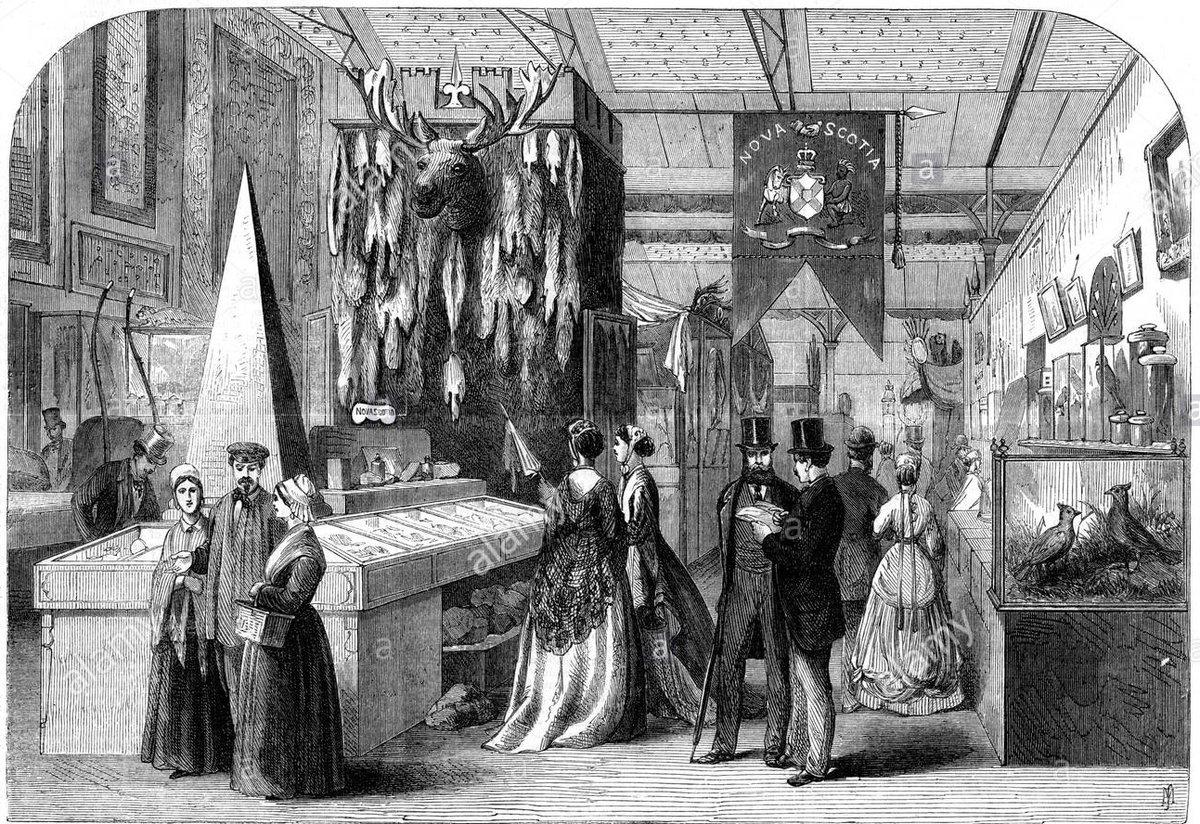#NovaScotia’s geology was well-represented at the Paris Exhibition (World’s Fair) in 1867.
An impressive collection of #NS minerals and rocks was displayed, including coal, iron, manganese, building stone and gems to show off NS’s resources.
#nspoli #cbpoli @ns_moi @NS_Museum
An impressive collection of #NS minerals and rocks was displayed, including coal, iron, manganese, building stone and gems to show off NS’s resources.
#nspoli #cbpoli @ns_moi @NS_Museum

Gold nuggets and gold-bearing quartz from eleven different #gold districts were displayed.
#nspoli #cbpoli #novascotia
#nspoli #cbpoli #novascotia

So was a pyramid with #gold gilt/plating to illustrate the quantity of gold that had been mined in the province between January 1861 and September 1866: 85,000 ounces (see left hand side of the picture below).
#nspoli #cbpoli #novascotia
#nspoli #cbpoli #novascotia

The pyramid was about five feet high and 18 inches square at its base. It represented $1.6 million in #gold production in 1867 dollars, about $28 million today (all figures in US dollars).
#nspoli #cbpoli #novascotia
#nspoli #cbpoli #novascotia

#NovaScotia #gold at the time was worth about $19.50 per ounce, compared to about $1600 per ounce today.
The value of the gold displayed at the Exhibition was estimated to be $1500 ($26,000 in today’s dollars).
#nspoli #cbpoli
The value of the gold displayed at the Exhibition was estimated to be $1500 ($26,000 in today’s dollars).
#nspoli #cbpoli

#Gold production figures for the first couple years of mining in #NovaScotia no doubt underreported what was actually produced.
#nspoli #cbpoli
#nspoli #cbpoli

The Department of Mines was not established until 1862 and complete production reports were not done until 1863. #Gold was discovered in #NovaScotia in 1858 in #Mooseland and our first #goldrush started in 1861.
#nspoli #cbpoli @NS_Energy_Mines
#nspoli #cbpoli @NS_Energy_Mines

After the Paris Exhibition much of the mineral collection was displayed at the new Provincial Museum in #Halifax. @NS_Museum was established in Oct 1868 as a museum of science+history. Today it has 28 museum sites and is 1 of the oldest provincial museums in the country.
#nspoli
#nspoli

• • •
Missing some Tweet in this thread? You can try to
force a refresh



























